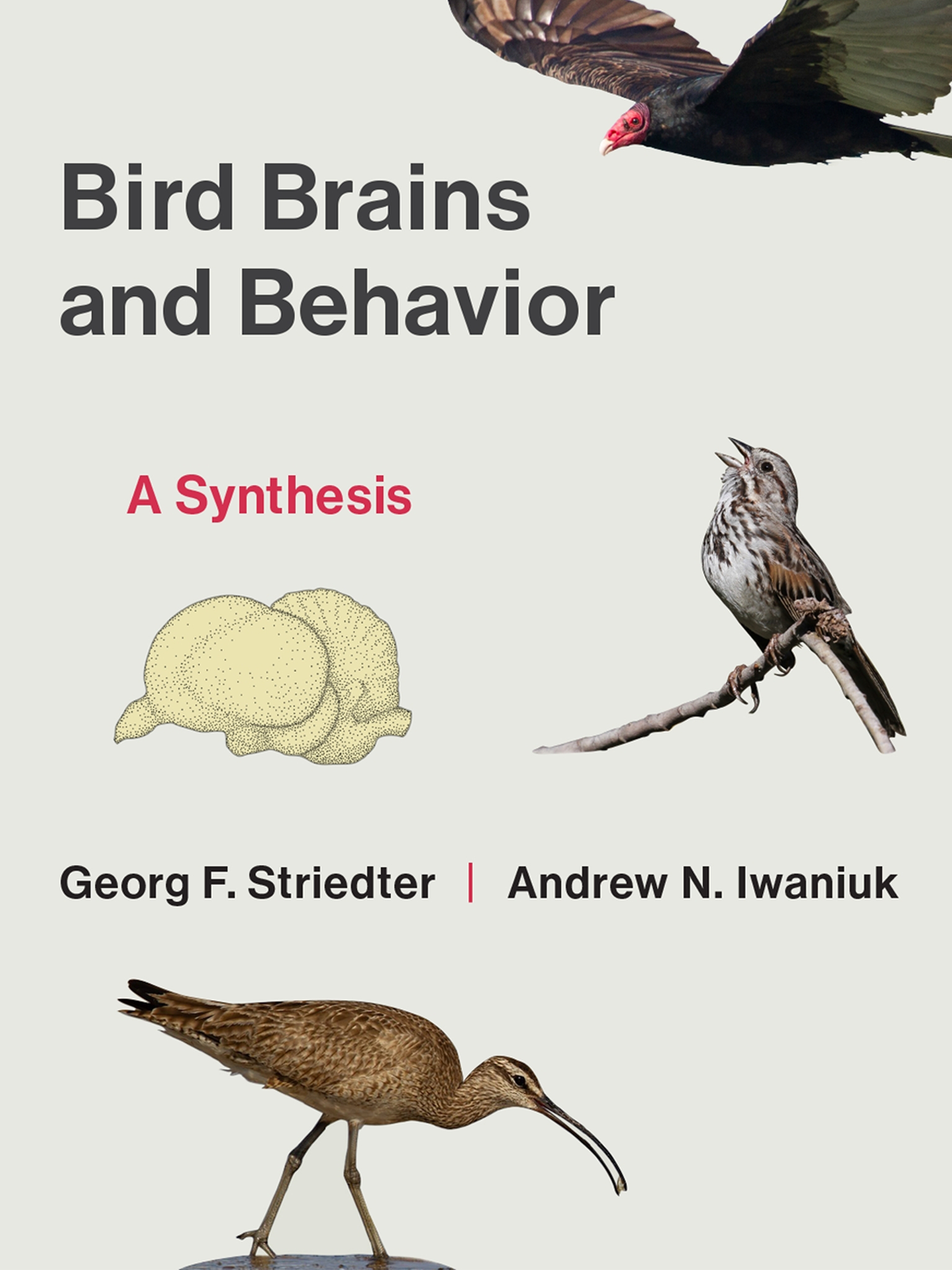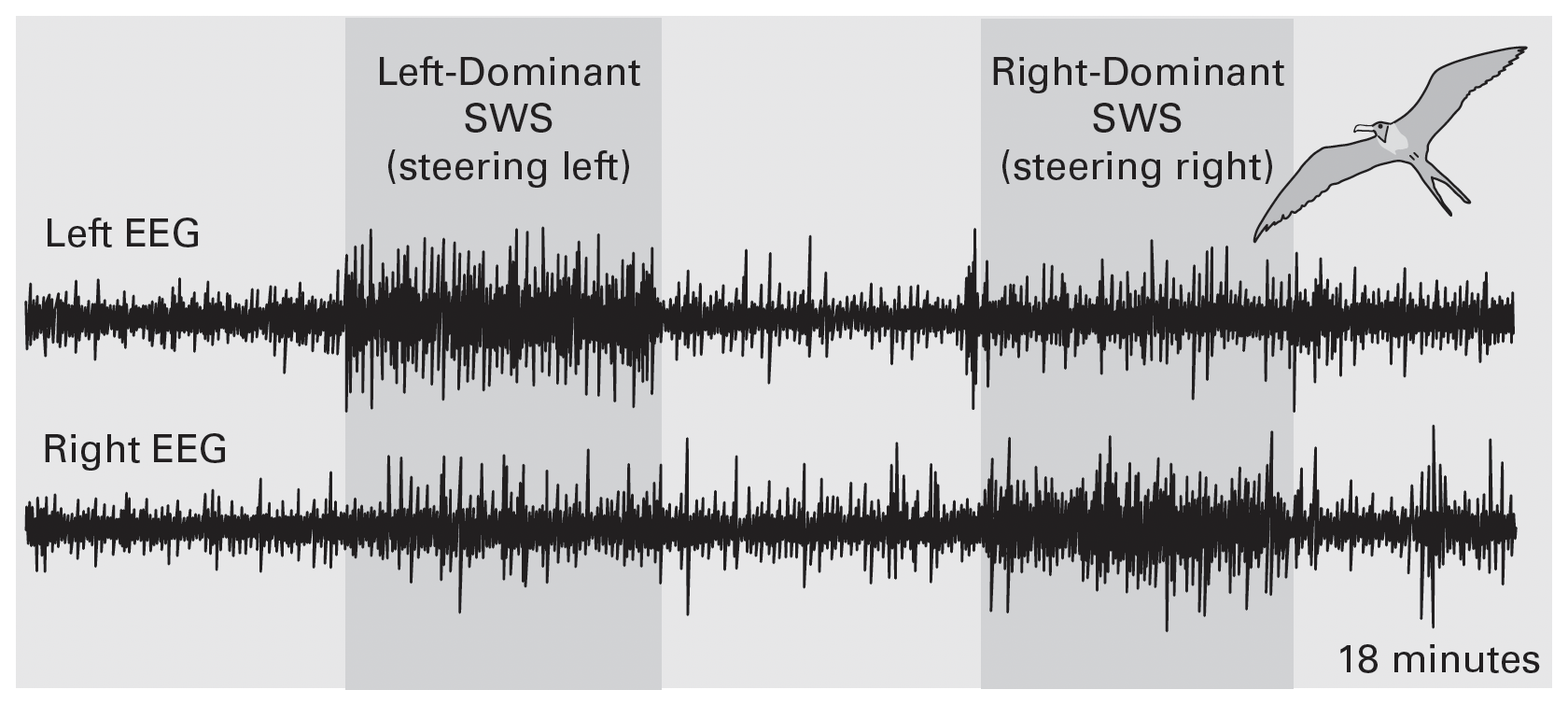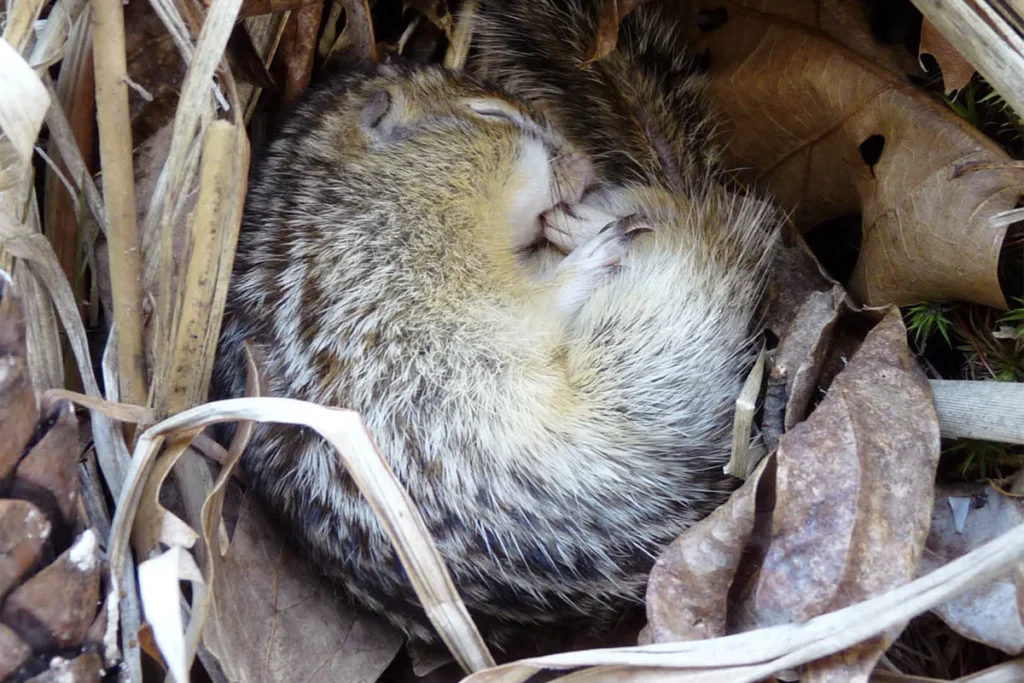Sleep in birds
Sleep is the most obvious behavior that, in most animals, follows a circadian rhythm. But have you ever seen a bird asleep? Maybe you have, though they usually wake up before you get close enough to see whether they have their eyes closed. Moreover, just because an animal is still and closed its eyes, does that really mean it is sleeping? Maybe it is just resting. Conversely, might some birds sleep with one or both eyes open?
Indeed, it is difficult to tell whether an animal is sleeping just by observing it. To overcome this problem, researchers may prod the animal to see whether it is less responsive at certain times of day. A more definitive method for demonstrating sleep in vertebrates is to record an animal’s brain waves (its electroencephalogram, or EEG), because these waves change significantly as an individual falls asleep and then progresses through several stages of sleep. In birds, the use of EEG recordings is essential because they can sleep with one or both eyes open, presumably so they can stay alert to threats. Ostriches, for example, tend to sleep while sitting on the ground, holding their head up high, and keeping both eyes open. They certainly look alert during this time, but EEG waves reveal that they are actually asleep
Types and patterns of sleep
An EEG measures the activity of many neurons simultaneously. In mammals, it is usually recorded from multiple electrodes placed over the neocortex; in birds, the electrodes are typically placed on top of the hyperpallium (aka the Wulst; see Chapter 1). In addition to performing an EEG, sleep researchers typically record the animal’s eye movements and an electromyogram (EMG), which is a measure of muscle activity, often characterized as muscle “tone.”
These kinds of studies have revealed that, in mammals, the transition from the waking state to sleep is marked by a shift from EEG waves that are low in amplitude (i.e., small) and high in frequency (>20 Hz) to waves that are much larger but lower in frequency (1–4 Hz). Because the latter state is characterized by powerful low-frequency EEG waves (aka slow-wave activity), it is commonly called slow-wave sleep (SWS). The mechanisms that cause SWS are complicated and involve a variety of sleep-promoting processes. However, the large amplitude of these slow waves reflects that, during SWS, numerous neurons fire in rhythm with one another so that their electrical potentials sum when they are recorded through the EEG electrodes.
A fascinating aspect of mammalian sleep is that SWS is occasionally interrupted by periods in which the EEG becomes similar to that of the waking state, even though the animal generally remains motionless, with the notable exception of eye movement (behind closed eyelids). These periods are called rapid eye movement (REM) sleep or, sometimes, “paradoxical sleep”—the paradox being that the EEG indicates wakefulness while other measures reveal the animal to be asleep. It is during this REM sleep that humans experience their most vivid dreams.
No one knows whether birds dream like we do, but EEG recordings from a variety of avian species indicate that birds do have both slow-wave and REM sleep, as well as one or more intermediate states. Several early studies suggested that birds do not sleep very much and usually do so in very short bouts; REM sleep was said to be particularly scarce. However, the experimenters in these early studies left the lights on during the EEG recordings so that they could monitor whether the birds were sleeping or awake. This was unfortunate, because we now know that light severely disrupts avian sleep (which means that city lights can be detrimental to birds; see Chapter 8). If, instead, birds are monitored with infrared light, which is invisible to them, then they sleep much more. Budgerigars, for example, spend 80 percent of their “dark time” asleep, and roughly 30 percent of their total sleep time in REM sleep. Similar results have been obtained from pigeons and songbirds. Altogether, these data show that obtaining a full picture of sleep requires monitoring animals under conditions that are as natural as possible.
Although avian sleep is similar to that of mammals, it does exhibit some significant differences. For one thing, REM sleep episodes tend to be much shorter in birds than in humans. In budgerigars, for example, each period of REM sleep lasts only five to 15 seconds, whereas REM episodes in humans typically last 10 minutes or more. Episodes of SWS also tend to be significantly shorter in birds than in mammals (interrupted as they are by frequent REM). Another species difference is that pigeons dilate their pupils during SWS, whereas mammals constrict them. The opposite happens when the animals are awake: Fully awake mammals tend to have enlarged pupils, whereas aroused birds tend to constrict them. These behavioral differences correlate with a difference in the pupillary constrictor muscles: They are slow-acting, involuntary “smooth muscles” in mammals, but fast, striated muscles in birds. In fact, parrots occasionally communicate by rapidly constricting and then dilating their pupils (a behavior called “eye pinning”).







